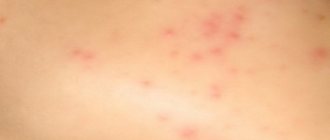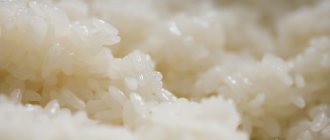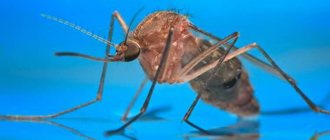An allergy of the body to a foreign protein... Like a reality drawn from a horror movie... Well, at least there are practically no reactions to one’s own protein. Foreign proteins are primarily recognized as proteins of animal origin contained in milk, meat, chicken and other egg whites, fish, and seafood. Less commonly, plant proteins found in legumes and cereals cause intolerance.
Necessity of proteins
Proteins are chains of amino acids that are present in the body and perform the function of enzymes, that is, cell builders. Their duty is considered to be protective action. They take part in the formation of the immune response against pathogenic microorganisms. Therefore, some amino acids are not synthesized in the body; they must be obtained from food.
During digestion, proteins that have been obtained from foods are broken down into amino acids, converted into energy, or synthesized into their own. These components are of animal and plant origin. Plants are present in foods such as nuts, legumes, cereals, and vegetables.
Meat, fish, seafood, eggs, and dairy products are rich in animal proteins. It is the building material of cells. Their lack, especially in childhood, causes slower growth and development. In adults, protein deficiency leads to slow tissue repair, poor hair growth, weakness, fatigue, and problems with the heart and blood vessels.
What foods do you react to?
Foreign proteins are contained in the following products:
It is not necessary that a person will be intolerant to all of the above products. As a rule, a negative reaction is formed to one type of protein.
Shrimp and sea fish are considered one of the most powerful allergens. The first contains a substance ─ tropomyosin. It has the ability to persist even in aquatic environments. The proteins contained in fish are not destroyed even after prolonged heat treatment.
A reaction may occur due to vaccination, because vaccines also contain animal proteins. The reason is that they are grown on chicken embryos.
The benefits of protein
Protein in the diet is important. The human body is 20% protein. To maintain your body in a healthy state, you need to follow an optimal diet, which includes vitamins, macro- and microelements. People who adhere to vegetarianism should be especially careful. Protein is part of most human muscles; its deficiency affects the condition of tissues - nails, hair, teeth.
The human body requires a lot of protein. This component takes part in the formation of tissues and the construction of cells, transporting substances through the blood. The remaining nutritional components are used daily to produce energy; protein is stored in the body for a long time.
When the amount of protein consumed is higher than normal, it is stored as fat. Excess carbohydrates also turn into fat deposits. Protein can be used as an energy source. During vigorous exercise, protein produces muscle growth. Proteins in the blood have a protective function. When damaged, they provide blood clotting. When protein is not supplied in the required quantity, the body uses the one it already has, causing hair to fall out, teeth to deteriorate and nails to break.
Preventive recommendations
It is easier to prevent any pathology than to try to cope with it; intolerance to animal protein is no exception.
Preventive recommendations include:
- When cooking meat, drain the water twice (this way you will reduce the amount of chemicals and antibiotics that may be present in the meat). For children, manipulations should become mandatory. A fragile immune system often reacts sharply to the entry of various substances into the body; parents should try by all means to prevent the occurrence of allergies;
- Most allergists insist that it is impossible to completely abandon meat products. Meat contains amino acids that are important for the development of a child and the functioning of the human body as a whole. Be vigilant, consume protein in small quantities, regularly changing your diet (you can’t always eat only chicken, prepare dishes from rabbit, turkey, beef, pork);
- try to eat only natural meat. You can buy food from rural farms; most supermarkets process meat products by adding a large number of chemical compounds.
If intolerance to animal protein does manifest itself, treat the pathology and consult a doctor. Self-medication is prohibited; in most cases, ignoring the problem or the wrong course of therapy leads to disastrous results.
Causes
Why does protein allergy occur? This reaction is an immune response to a protein that is structurally similar to a person’s own proteins. An allergy to protein in a child occurs due to the fact that his digestive system is still developing and adapting to external influences.
A lack of proteolytic enzymes causes reactions to foods. Children are usually allergic to milk and egg protein. It may go away with age. Only some people have this reaction for life. Reactions to seafood, nuts and grains may occur.
Protein allergies come from:
- negative impact of the environment on immunity;
- infectious diseases and exacerbation of chronic diseases in the mother, taking medications during the intrauterine development of the child, improper introduction of complementary foods to babies - in children;
- long-term use of medications, especially antibiotics.
Research shows the negative effect of hygiene in this matter. In the third world, protein allergies are rare. The disease is usually observed in large families. But the main reason is considered to be heredity. This means that if at least one parent has a food allergy, the risk of a child developing a protein allergy increases to 80%. Other types of allergic reactions may occur.
Animal protein as a cause of allergies
Many people probably already know that food allergies are a very serious type of disease.
This disease affects the health of millions of people. As practice shows, it is distinguished by the unpredictability of its consequences, since these can be minor symptoms of an eating disorder or simply intolerance and, as happens with some people, with the temporary exclusion of meat products from the diet, everything soon falls into place. However, sometimes negative reactions of the body after eating meat can be very serious, because anaphylaxis may begin. Of course, this allergy deprives the patient of a lot of healthy and delicious dishes. Which is really a shame, unless you're a vegetarian, of course.
Types of allergies
Depending on the product, there are 3 types of allergies:
- For milk protein. Casein leads to an inflammatory response in children and adults with weak immune systems. Once it enters the bloodstream, it is difficult to absorb, leading to the production of antibodies. Lactose intolerance is also called milk protein allergy, but this is erroneous. Compared to casein, lactose is a carbohydrate called milk sugar. Intolerance to this substance occurs from an enzyme deficiency, but an allergic reaction does not occur.
- For egg whites. Signs of pathology appear within 24 hours after taking the product and persist until it is completely discontinued. Sensitivity can occur from various foods that contain egg whites: baked goods, sauces, confectionery.
- For fish and seafood protein. Allergies are common in coastal villages, where people's diets contain more seafood. The reaction is usually hereditary and occurs in the first year of a child's life. If there is no genetic predisposition, an allergy may appear in an adult who eats fish.
Allergy to cow's milk protein in infants - prevention
Prevention of childhood protein allergies begins in the uterine period. To prevent the disease you need:
- – adequate healthy nutrition for the mother during pregnancy and lactation (avoiding excessive consumption of dairy products);
- – later start of artificial feeding with whole milk and formulas, if possible, maintaining breastfeeding for as long as possible up to 1.5 years;
- – refraining from overfeeding the child (excessive undigested proteins entering the bloodstream can trigger an allergic reaction).
The child needs to be in the fresh air more and move actively.
Symptoms
Signs of allergies are similar to the general manifestations of the disease. Skin symptoms of protein allergy include dryness and flaking, rash, and swelling. Individual rashes can connect and create large areas of affected skin.
Damage to the mucous membranes leads to allergic rhinitis, in which the following is observed:
- swelling of the nasal passages;
- mucus department;
- swelling of the throat;
- soreness;
- cough;
- sneezing;
- difficulty breathing;
- hoarseness.
Due to constant swelling of the nasopharynx, the voice changes and breathing problems appear. Because of this, the development of bronchial asthma is likely.
How does a protein allergy manifest itself? There may be lacrimation, itching, foreign body sensation, swelling of the eyelids, hyperemia. These manifestations are called allergic conjunctivitis, which leads to severe damage to the mucous membranes.
Symptoms also appear in the digestive tract. This is severe gas formation, vomiting, diarrhea. As a result, enterocolitis occurs, which consists of inflammation of the small and large intestines. Quincke's edema is also possible, when the lips, tongue, and airways swell, which can lead to suffocation. In these cases, urgent first aid and calling an ambulance are required. The condition worsens half an hour after taking the dangerous protein.
Symptoms - how food intolerance manifests itself
The symptoms of food intolerance are extremely varied and complex, which is why it is so difficult to distinguish from other eating disorders. The diagnostic problem is further aggravated by the long period of time between the consumption of the allergen and the reaction. Symptoms can also affect various organs and systems of the body.

Symptoms of intolerance...
Here are the main groups of symptoms of food intolerance :
- Skin: eczema (dermatitis, itching and redness, accompanied by inflammation and swelling), rash, acne (inflammatory process of hair follicles and sebaceous glands), intense itching.
- Gastrointestinal tract: nausea, stomach pain and digestive problems, colitis (inflammation of the colon), alternating diarrhea and constipation, anal itching.
- Cardiovascular system: rapid heartbeat, hypertensive crisis (high blood pressure), extrasystolitis.
- Neurological symptoms: headache, inability to concentrate, irritability and mood swings, unmotivated anxiety and panic attacks, impaired sensation in the hands and feet with tingling.
- Respiratory system: asthmatic problems, hoarse voice, cough, nasal congestion, inflammation of the conjunctiva, itching and burning of the eyes, lacrimation.
- Urological apparatus: cystitis (inflammation of the bladder), irritation of the genital organs, decreased libido.
- Muscular and skeletal system: joint pain, muscle pain, cramps.
- General: asthenia (chronic fatigue), excess weight, cellulite, swelling of the lower extremities, anorexia.
Specific manifestations
Allergies to proteins in milk and other products also manifest themselves in the form of specific symptoms:
- Iron deficiency anemia, which occurs with minor blood loss, enterocolitis.
- Changes in the composition of urine and difficulty urinating.
- Nosebleeds.
- Disorders of the cardiovascular and nervous systems – headache, pressure changes.
- Allergic vasculitis, in which small vessels become inflamed.
The level of manifestations is determined by the amount of food eaten and its accumulation in the body. With repeated use, the condition can worsen greatly.
Tips for parents
The main method of combating childhood allergy to bkm is to avoid exposure to the allergen too early. If possible, continue breastfeeding for as long as possible. For the first 6 months, breastfeed your baby exclusively. Avoid unmotivated feeding of the child with formula in the first months of the baby’s life.
According to statistics, 50% of children in the maternity hospital are formula fed, of which 1/3 is unjustified. There is no need to rush into introducing complementary foods. You need to start feeding your child when the baby is physiologically ready for this - not earlier than reaching the age of six months.
Complementary feeding should begin with hypoallergenic foods. Products containing bkm and goat's milk should be included in the baby's diet after they reach 1 year. If there are medical indications, it is necessary to supplement the child with hypoallergenic and hydrolytic mixtures. If a child develops atopic dermatitis, it is necessary to supplement the baby with highly hydrolytic amino acid mixtures.

Diagnostics
If you experience any symptoms of an allergy to chicken protein or milk protein, you should consult a doctor. Thanks to timely diagnosis, serious consequences will be prevented. A pediatrician or therapist, after examining and collecting anamnesis, makes a preliminary diagnosis. You will probably need to see an allergist.
A blood test for immunoglobulin E (IgE) reveals the presence of allergies and helps to exclude other pathologies. Then the allergy trigger is determined; keeping a food diary is considered the simplest and most accessible method. It indicates all the foods eaten and the reaction to them. If an allergy appears in a baby, then such a diary should be kept by the nursing mother.
When a potential allergen is identified, an elimination diet is needed: protein is excluded from the menu for a while. If the symptoms go away and reappear upon re-appointment, the diagnosis is confirmed.
Skin tests are performed, the reliability of which is high - up to 95%. To do this, allergens are applied to the slightly injured skin of the forearm. Red and swollen areas confirm a reaction to the product. Studies can be performed on blood serum with the addition of various proteins to determine the provocateur of the pathology. Food provocation tests are performed only when absolutely necessary and in a hospital setting under the supervision of a doctor.
Food proteins that enter the human blood are what: antigens, antibodies, enzymes?
Protein molecules have a complex structure and consist of amino acids. The latter are the material for the assembly of proteins, which is why any living organism needs their constant replenishment.
The main source of amino acids is any food protein, which must enter the body’s digestive system and be broken down into its elementary components. At the same time, food proteins that enter the human blood are immunogenic substances, whose presence inside the vessels is unacceptable.
Any foreign protein that directly contacts the internal environment of the body causes harm to the latter and acts as an antigen.
Characteristics of food proteins
In the case of normal eating behavior, which excludes cannibalism, the human digestive system receives mainly those substances that are not normally present in the body. This means that all food proteins that enter the human blood are foreign.
Therefore, before they are absorbed, they must be broken down into their elementary components - amino acids. This necessity is explained by the fact that any protein has certain properties, the presence of which is explained by a specific chemical and spatial structure.
Some of them are enzymes, and some are poisons.
Any protein retains its properties as long as it has the same spatial structure. And the most reliable and energetically correct way of assimilation is complete cleavage, which consists of the stage of denaturation and gradual breaking of peptide bonds.
Without breakdown, all food proteins that enter the human blood are antigens.
Moreover, intravenous administration of food proteins threatens the rapid death of a person, while the introduction of amino acids or dipeptides into the blood can be used by athletes or malnourished patients with protein starvation without harm to the body.
Contact of foreign proteins with the immune system
When studying immunology and microbiology, provocative questions may be asked as a test to determine the level of mastery of the material.
For example, a question of a similar nature: what are food proteins that enter the human blood? If this is computer testing, then the following answer options can be offered: antibody, enzyme, antigen, hormone.
The only correct option is an antigen, since any foreign protein in the internal environment of the body is attacked by the immune system and is perceived as a xenobiotic or poison. It also cannot be a vitamin.
Causes of an immune reaction
An organism is able to use for its needs only those proteins whose primary structure is encoded in its genome. This means that even the entry into the blood of an enzyme that normally exists in humans will cause a reaction from the immune system.
This will happen due to the inadmissibility of certain substances in certain biological environments. For example, intracellular enzymes, normally present in mitochondria or the nucleus, are foreign when released into the blood.
Therefore, they are perceived by the immune system as antigens and are eliminated by the macrophage system.
The only exceptions are those proteins that completely correspond in structure to certain enzymes or hormones. For example, artificially synthesized insulin does not cause an immune reaction when introduced into the blood.
This happens because it has the same chain structure and electrical charge as natural human insulin. However, insulin is not a dietary protein. Once in the human blood, it is a hormone.
But all other food proteins, when administered intravenously, cause significant harm.
For successful absorption, food proteins must be broken down in the digestive system. Then they can enter the blood in the form of amino acids, losing their structure.
In this form, they can be used by cells to biosynthesize their non-immunogenic proteins, which will function as hormones, mediators or enzymes within the cell or in the blood.
The statement that food proteins that enter the human bloodstream are enzymes, antibodies or hormones is false. They remain only antigens and cannot be anything else.
Why foreign proteins are not antibodies
To finally understand why a foreign protein cannot be an antibody, you need to correctly understand the course of immune processes. An antibody is a complex globulin protein that is synthesized by plasma cells of the human immune system. An antigen is a molecule that triggers a response from the immune system.
All food proteins that enter the human blood are antigens. Upon initial contact, they are engulfed by a macrophage, which recognizes the protein structure and transforms into an antigen-presenting cell. Based on the information obtained after lysis of the antigen, immunoglobulins are synthesized.
The latter are antibodies.
Antibody synthesis
An antibody is a protein molecule synthesized in the human body to eliminate a specific antigen. It is synthesized in response to the appearance of antibodies in the internal environment of the body.
The mechanism of their interaction can be expressed as follows: the antibody, in case of contact with the antigen, allows the macrophage to begin the massive destruction of the foreign protein, bypassing the stage of presenting the antigen on its membrane.
Antibody synthesis is a method of transition from cellular to humoral immunity, and all food proteins that enter the human blood are antigens that must be eliminated.
The outcome of the introduction of dietary protein into the blood
The hypothetical outcome of intravenous administration of a foreign protein is difficult to predict, since it depends on the specific protein and its dose.
In minimal doses, an immune reaction will develop, and the protein will be absorbed by macrophages, which will provide antigens to plasma cells. The latter synthesize antibodies after about 2 weeks.
If the protein is reintroduced into the blood, a reaction will occur not of cellular, but of humoral immunity. At the same time, food proteins that enter the human blood are not antibodies.
Introduction of proteins in large quantities
In large quantities, food proteins introduced directly into the blood will lead to death due to increasing renal failure or pulmonary embolism. The latter option is possible when the protein is introduced in oil solutions or in the form of solid particles. However, specific experiments designed to confirm such hypotheses were not conducted for ethical reasons.
It is obvious that the body cannot absorb proteins from the blood, but uses for its needs only the components from which they consisted.
Then the question should be answered: in the case of direct intravenous administration, are the food proteins that enter the human bloodstream antibodies, antigens, enzymes or vitamins? The answer is antigens.
Some of them, without splitting, are completely poisonous. Getting directly into the blood, they are not neutralized by the liver, and therefore can kill a person.
Source: https://FB.ru/article/359022/pischevyie-belki-popavshie-v-krov-cheloveka-yavlyayutsya-chem-antigenami-antitelami-fermentami
Treatment
Currently, there is no cure for allergies in medicine. It is necessary to form a stable remission by eliminating allergens from the diet and desensitizing the body. In this case, a complete replacement for allergenic products is required in terms of the presence of valuable components.
It must be taken into account that if you are prone to allergies throughout your life, the number of dangerous products can increase, and there may be reactions to other types. When following a hypoallergenic diet, you need to take into account that dangerous protein may be in the form of a component of finished products.
If a child is allergic to cow's milk, it can be replaced with fermented milk products or goat's milk. Treatment involves eliminating symptoms. The following drugs are used:
- Sorbents that cleanse the body and remove hazardous substances. This is activated carbon, an atoxin.
- Antihistamines that improve general condition.
- Ointments and gels for external use for skin symptoms, itching.
- Sprays in the throat and nose, eye drops to reduce swelling of the mucous membrane, hyperemia, and itching.
The doctor may prescribe immunostimulants, which include the allergen in a different form. After they penetrate the body in other doses and concentrations, the immune system will work in a different way towards it, which reduces the strength of the reaction.
Often the impact on the immune system reduces immunity and leads to the risk of other ailments and bacterial infections. For severe conditions that cannot be stopped, topical hormonal drugs and corticosteroids for internal use are used.
Video
Eosinophils are special cells of the immune system, a type of white blood cell. Eosinophils typically have a nucleus with two lobes and a cytoplasm with approximately 200 large granules containing enzymes and proteins with various functions (some of which are still unknown).
Eosinophils are formed exclusively in the bone marrow, where they spend about eight days - the entire maturation process - and then move into the blood vessels. They travel through the blood vessels for approximately 8-12 hours until they finally enter certain tissues, where they remain for one to two weeks. Interleukin 5 (IL-5) appears to be a major factor in eosinophil growth.
Norm
Normally, eosinophils make up about 1-6% of all leukocytes; their diameter is 12-17 microns. They are found in the bone marrow and brain, lower gastrointestinal tract, ovaries, uterus, spleen and lymph nodes; eosinophils are absent in the lungs, skin, esophagus and some other internal organs - under normal conditions. The presence of eosinophils in these latter organs is usually a sign of disease. Eosinophils live in the bloodstream for 8-12 hours, and in tissues, in the absence of stimulation, for 8-12 days.
To treat diseases caused by eosinophils, the following are used:
- Corticosteroids - they quickly reduce the level of eosinophils in the blood;
- Monoclonal antibody therapy.
White blood cells and their functions in the human body
White blood cells (leukocytes) perform a protective function, but they are not the same cells, they are divided into groups, each of which does its own job. First of all, they are divided into granulocytes (granularity is clearly visible in their cytoplasm) and agranulocytes, which do not have such granularity. Granulocytes, in turn, are divided into:
- neutrophils - their main function is protection against infection; when an infection enters the body, their number increases;
- eosinophils – protection against foreign protein, their number increases in allergic conditions;
- basophils - also neutralize foreign proteins and participate in the process of blood clotting.
Agranulocytes are divided into lymphocytes (they are responsible for all immunological reactions, for example, for the production of antibodies to infectious agents) and monocytes (large cells that absorb cell debris and small foreign bodies).
Structure and functions of eosinophils
Eosinophils are cells with a large nucleus consisting of two or three segments. Around the nucleus there is a granular cytoplasm that can be easily stained with eosin dye in a pink-orange color (from slightly pink to copper color). Eosinophils contain enzymes that can dissolve foreign proteins, while granules contain biologically active substances prostaglandins. In addition, they contain glycogen (its breakdown produces energy), which serves as a source of energy when there is a lack of oxygen in the body, for example, in areas of inflammation.
The main function of eosinophils is to fight foreign protein: eosinophils absorb it and dissolve it with the help of their enzymes.
Increase in the number of eosinofols in the blood
In a general blood test, eosinophils are counted as a percentage of all leukocytes. The normal content of eosinophils in the blood of adults is 20–300 cells in one μl of blood, or 0.5–5% of all leukocytes. An increase in the number of eosinophils in the blood is called eosinophilia. Hypereosinophilia (a large increase in the number of eosinophils) is considered a condition in which the content of eosinophils in the blood is 15% or more.
Eosinophilia occurs as a result of increased production of eosinophils in the bone marrow - a protective reaction of the body in response to the entry of foreign protein products into the blood. In this case, prostaglandins are released from the eosinophilic granules, which have antihistamine activity (histamine is the main substance released during allergic reactions).
There are reactive eosinophilias (arising in response to some situation) and eosinophilias arising from blood diseases. Reactive eosinophilia includes eosinophilia due to helminthiasis (helminthic infestations), allergic conditions, and taking certain medications (drug eosinophilia). Sometimes eosinophilia occurs in practically healthy people; familial eosinophilia is known.
A large number of eosinophils in the blood appear in a number of diseases of the blood system, for example, in chronic myeloid leukemia (blood cancer). Eosinophilia also appears in cancer of the gastrointestinal tract, genital organs, thyroid gland, kidneys, especially in the presence of metastases in the bone marrow.
If eosinophilia is detected, first of all, the presence of worms in the body is checked, and if a tumor is suspected, a full diagnostic examination is performed.
Eosinophilia in children
In newborn children, the content of eosinophils in the blood is normally 0.5 - 8% of all leukocytes; in older children it does not exceed 5%. There are reactive eosinophilia, primary hypereosinophilic syndrome and hereditary (familial) eosinophilia.
In children, reactive eosinophilia most often occurs, which usually occurs with a moderate (up to 15%) increase in eosinophils in the blood. In newborns, the cause of this condition may be intrauterine infections, allergic reactions to medications or cow's milk. In older children it is
One of the most common allergens is protein: it is dangerous not only for children, but also for adults. Protein allergies are gradually becoming the scourge of modern society.
An allergy is an oversensitivity of the body's immune system upon repeated exposure to an allergen. This phenomenon was discovered in 1906 by pediatrician Clemens von Pirquet. He noticed that some of his patients complained of similar symptoms when using certain substances. At the moment, the most common allergens are dust, pollen, medications, and food products. The symptoms have remained unchanged since Von Pirke noticed them: swelling, redness, pain, shortness of breath, rashes, etc.
Prevention and prognosis
Preventive procedures include strengthening the immune system, a healthy lifestyle, and giving up bad habits. You should be more careful about your health during pregnancy and lactation:
- reduce medication intake;
- control your diet, get more rest;
- introduce complementary foods to the child carefully, monitor reactions;
- do not overfeed children.
Often a dangerous factor that leads to allergies is the implementation of preventive vaccinations in children. Vaccination of allergy sufferers can be carried out only at the stage of stable remission.
The reasons for the immune response are not fully understood. Therefore, most recommendations relate to maintaining a healthy lifestyle. If you have an allergy, it should not be considered a harmless phenomenon. Thanks to the timely identification and exclusion of the allergen, it helps to prevent serious consequences and the need to take medications with side effects.











